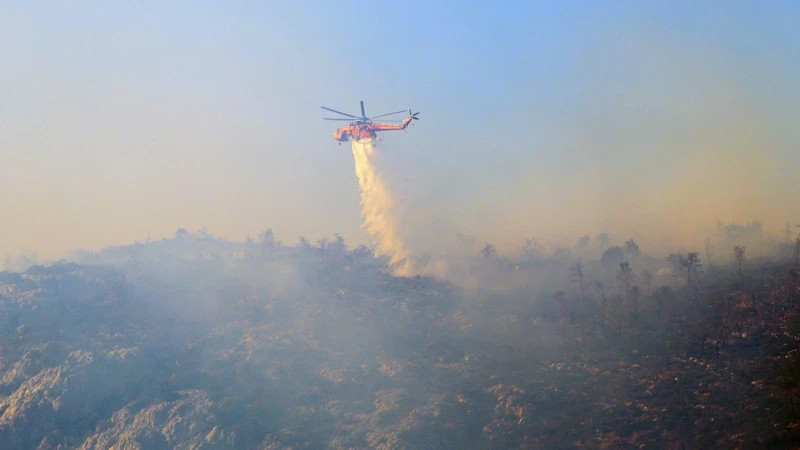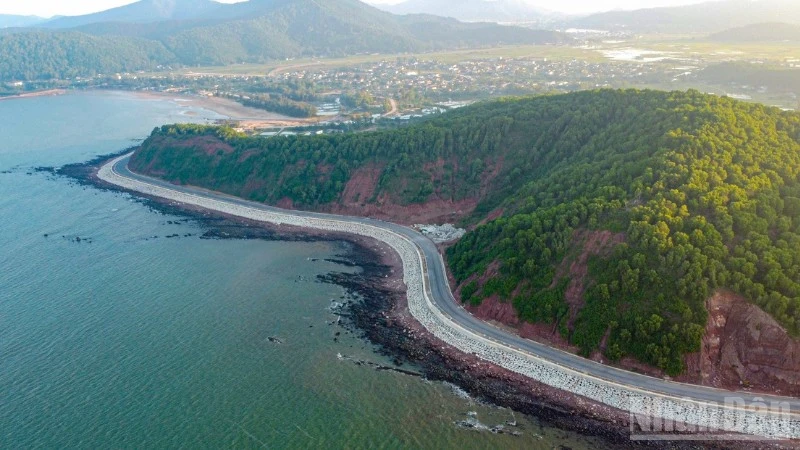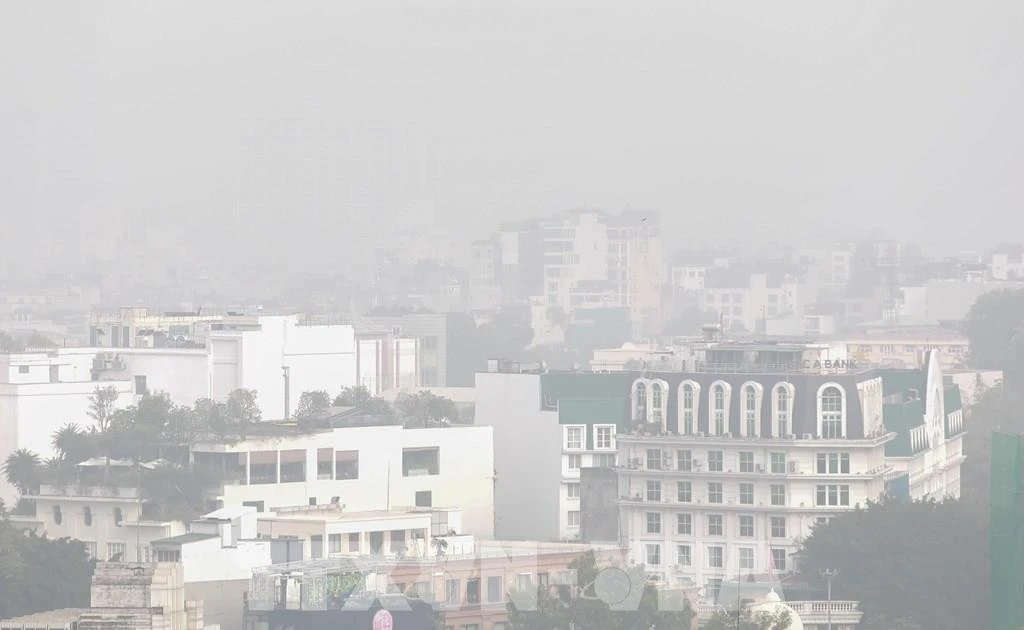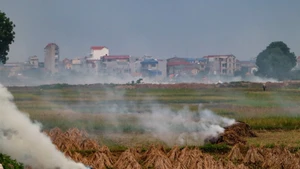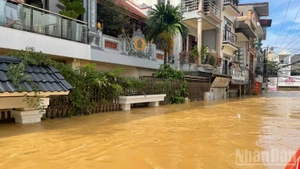In the context that climate change has been causing extreme weather across the planet, many countries are struggling with increasingly serious forest fires.
This is the first time scientists have pointed out the increasing trend of forest fires — a natural disaster that takes a heavy toll on national economies as well as on the environment and human livelihoods.
Using satellite records, scientists studied nearly 3,000 wildfires of tremendous "radiative power" between 2003 to 2023, from which they established a 2.2-fold increase in their occurrence over that period.
Data shows that the intensity of the 20 most extreme blazes in each year had also more than doubled — a rate that “appears to be accelerating”.
The increasingly tinder-dry conditions that fuel massive fires have been linked to a changing climate.
Furthermore, forests also absorb carbon from the atmosphere and the loss of trees to fire releases that CO2 back into the atmosphere where it contributes to global warming.
Increasing frequency and intensity
The six most extreme years in terms of intensity and frequency of wildfires have occurred since 2017, the study said. 2023 witnessed "the most extreme wildfire intensities" of the period studied.
The areas witnessing a rise in extreme fires were clustered geographically, especially in North America, northern parts of Eurasia, and Australia.
Temperate conifer forests, which cover the western United States, saw an 11-fold increase in extreme fires over the past two decades.
Earth's northernmost forests, which cover Alaska, Canada and Russia, saw a more than seven-fold rise.
The Brazilian Amazon recorded 13,489 wildfires in the first half of the year, the worst figure in 20 years. The total was up more than 61% compared with the same period last year — an increase that experts say is the result of a historic drought which struck the world's largest tropical rainforest last year.
Wildfires also set January-June records in two other biodiverse ecosystems south of the Amazon: the Pantanal, one of the world's largest tropical wetlands, and the Cerrado savanna, which lies mainly in Brazil.
In the Pantanal, which is home to millions of caimans, parrots, giant otters and the world's highest density of jaguars, 3,538 wildfires were recorded in the first six months of 2024 — an increase of more than 2,000% as compared with last year.
The total is also up 40% as compared with 2020, the previous record-setting year in that region.
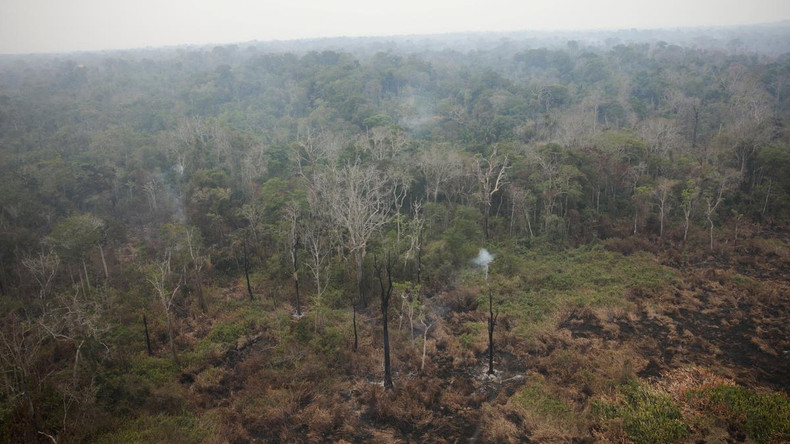 |
| Smoke from burning vegetation rises in a rainforest in Yanomami Indigenous land, Roraima state, Brazil, March 2, 2024. (Photo: Reuters) |
In June alone, a total of 2,639 fires were detected — six times the highest number ever recorded.
The situation is worrisome as the height of the wildfires season is normally in the second half of the year, especially in September, when the weather is at its most dry.
The State of Mato Grosso do Sul, where much of the Pantanal is located, declared a state of emergency last week, and authorities announced that firefighters would be dispatched from other regions to help battle the flames.
Meanwhile, Cerrado — one of Earth's three great savannas, along with Africa's and Australia's — experienced 13,229 fires from January through June, almost as many as the Amazon.
According to Romulo Batista, the spokesman of the Brazilian branch of Greenpeace, "climate change is contributing" to the increase in the number of wildfires.
“The environment is drier, and thus vegetation is more dried out and more vulnerable to fires,” he said.
However, he said most of the wildfires were likely not spontaneous, such as being sparked by lightning, but were instead caused by human activity — especially the use of agricultural burning.
Bolivia has declared an "orange alert" in 74 towns due to the growing risk of forest fires caused by arson or clearing for crops.
The "orange alert" is an urgent call for action to prevent an environmental or economic disaster.
Forest fires were a direct consequence of agricultural practices that got out of control. The eastern department of Santa Cruz has been hit the hardest.
Climate change: Spiral of silence
In Europe, Greek firefighters are battling wildfires near the Greek capital Athens as the country braces for a challenging wildfire season with soaring summer temperatures following its warmest winter and earliest heatwave on record.
Greece faces a tough wildfire season after its warmest winter and earliest heat wave on record, with temperatures hitting 44 degrees Celsius.
Prime Minister Kyriakos Mitsotakis called on Greeks to brace for a difficult wildfire season.
Emissions of greenhouse gases such as carbon dioxide and methane from these fires have reached their third-highest level in the Arctic region for June in the past two decades.
Authorities in Russia’s Siberian and Far East Republics of Tyva and Sakha (Yakutia) have declared states of emergency due to summer wildfires raging across the regions.
Professor Gail Whiteman of University of Exeter (UK), Director of the Arctic Basecamp-A group of arctic experts and scientists, warned that the Arctic region was "ground zero for climate change."
“The increasing Siberian wildfires are a clear warning sign that this essential system is approaching dangerous climate tipping points,” she said.
“What happens in the Arctic doesn't stay there,” she noted, adding that these fires are “a warning cry for urgent action.”
Wildfires emit carbon dioxide and other greenhouse gases that will continue to warm the planet, destroy forests and other ecosystems that act as carbon, and reduce air quality.
smoke from the flames will hinder the Arctic ice's ability to reflect solar radiation — which would mean more heat absorption by both the land and sea.
Given the situation, the researchers have emphasised the urgency with which countries must adapt as the climate becomes more conducive to extreme wildfires, including through better forest management at the local level towards the prevention of major wildfires.
